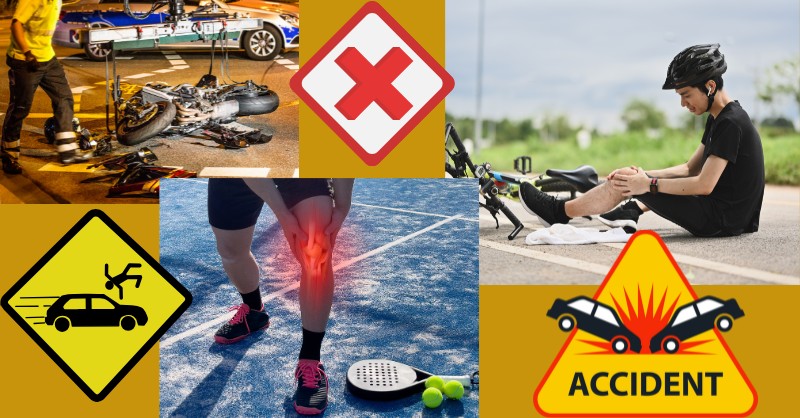Accidental Injuries in America: Reduce Risks, Learn Vital Facts
Accidental injuries in America are a leading cause of death and disability, affecting millions of people every year. Indeed, from car crashes and falls to poisoning and burns, these incidents can happen to anyone, anywhere. However, understanding the causes, prevention strategies, and key statistics can help reduce risks and keep you and your loved ones safe. In this post, we’ll explore the most common types of unintentional injuries, their impact, and actionable tips to prevent them.
What Are Accidental Injuries?
Accidental injuries, also known as unintentional injuries, are harm caused by unexpected events rather than intentional acts. For instance, they include incidents like motor vehicle accidents, falls, burns, drowning, and poisoning. In the U.S., these injuries are a significant public health concern, contributing to thousands of deaths and hospitalizations annually.
Moreover, understanding the root causes of these incidents is the first step toward prevention. For example, many car accidents are caused by distracted driving, while falls often result from unsafe environments. Therefore, by addressing these factors, we can significantly reduce the occurrence of accidental injuries in America.
Common Types of Accidental Injuries in the U.S.
1. Motor Vehicle Accidents
Car crashes are one of the leading causes of accidental deaths in America. Specifically, factors like speeding, drunk driving, and distracted driving contribute to these incidents. According to the National Highway Traffic Safety Administration (NHTSA), over 38,000 people die in motor vehicle crashes each year.
To stay safe, always wear a seatbelt, avoid using your phone while driving, and follow traffic rules. Additionally, ensure your vehicle is well-maintained, with functioning brakes, tires, and lights. Furthermore, defensive driving courses can also help improve your skills and reduce the risk of accidents.
2. Falls
Falls are particularly dangerous for older adults and young children. Consequently, they can lead to serious injuries like fractures or traumatic brain injuries. The CDC reports that falls are the leading cause of injury-related deaths among adults aged 65 and older.
To prevent falls, remove tripping hazards at home, install grab bars in bathrooms, and ensure proper lighting in stairways. Moreover, regular exercise to improve balance and strength can also reduce the risk of falling, especially for older people.
3. Poisoning
Poisoning, including drug overdoses and chemical exposures, is a growing concern. Notably, the opioid epidemic has significantly contributed to the rise in poisoning-related deaths, with over 87,000 fatalities annually.
To avoid poisoning, keep medications and household chemicals out of reach of children, and follow proper storage guidelines. If you suspect poisoning, call the Poison Help Line at 1-800-222-1222 immediately.
4. Burns and Fire-Related Injuries
House fires and scalds are common causes of burns. Indeed, the American Burn Association states that over 400,000 burn injuries require medical treatment each year.
To reduce risks, install smoke detectors, keep flammable materials away from heat sources, and supervise children around hot liquids. In case of a burn, cool the affected area with running water and seek medical attention if necessary.
5. Drowning
Drowning is a leading cause of death among children. In fact, the CDC reports that nearly 4,000 people die from drowning annually, with children under five being the most vulnerable group.
To prevent drowning, always supervise kids near water, install pool fences, and learn CPR to respond effectively in emergencies. Additionally, swimming lessons can also help reduce the risk of drowning for both children and adults.
Key Statistics on Accidental Injuries in America
- Accidental injuries are the 4th leading cause of death in the U.S., accounting for over 200,000 deaths annually.
- Falls are the most common cause of non-fatal injuries, especially among older adults.
- Motor vehicle crashes result in over 38,000 deaths each year.
- Poisoning, including drug overdoses, causes more than 87,000 deaths annually.
- Drowning claims the lives of nearly 4,000 people every year, with children being the most vulnerable group.
Clearly, these statistics highlight the importance of taking proactive steps to prevent unintentional injuries.
How to Prevent Accidental Injuries
Preventing accidental injuries in America requires a combination of awareness, education, and practical measures. Here are some effective strategies:
1. Practice Safe Driving
- Avoid distractions like texting or eating while driving.
- Always wear a seatbelt and ensure passengers do the same.
- Follow speed limits and traffic rules.
- Never drive under the influence of alcohol or drugs.
2. Make Your Home Safer
- Install smoke detectors and carbon monoxide alarms.
- Use non-slip mats in bathrooms and secure rugs to prevent falls.
- Keep hazardous substances like cleaning products and medications out of reach.
- Ensure your home is well-lit, especially in stairways and hallways.
3. Supervise Children
- Never leave young children unattended near water or in the kitchen.
- Childproof your home by covering electrical outlets and securing furniture.
- Teach children about safety rules, such as looking both ways before crossing the street.
4. Learn First Aid and CPR
- Knowing basic first aid and CPR can save lives in emergencies.
- Take a certified course to be prepared for accidents.
- Keep a first aid kit at home and in your car.
5. Stay Informed
- Keep up with safety guidelines and recommendations from trusted sources like the CDC and OSHA.
- Participate in community safety programs and workshops.
The Role of Public Health in Reducing Accidental Injuries
Public health initiatives play a crucial role in addressing unintentional injuries in America. For example, organizations like the CDC and NHTSA work to educate the public, enforce safety regulations, and promote injury prevention programs. Additionally, campaigns against distracted driving and initiatives to reduce opioid overdoses have saved countless lives.
Thus, by supporting these efforts and adopting safe practices in our daily lives, we can collectively reduce the impact of accidental injuries.
Conclusion: Stay Safe and Informed
Accidental injuries in America are a serious but preventable issue. By understanding the causes, staying informed about key statistics, and taking proactive steps to reduce risks, we can protect ourselves and our loved ones. Whether it’s practicing safe driving, childproofing your home, or learning first aid, every action counts.
Therefore, let’s work together to create a safer environment and reduce the burden of unintentional injuries in our communities.
FAQs About Accidental Injuries in America
1. What are the most common accidental injuries?
The most common accidental injuries include falls, motor vehicle accidents, poisoning, burns, and drowning.
2. How can I prevent falls at home?
Remove tripping hazards, install grab bars, and ensure proper lighting to prevent falls.
3. What should I do in case of accidental poisoning?
Call poison control immediately and follow their instructions. Keep the number (1-800-222-1222) saved in your phone.
4. Are children more prone to accidental injuries?
Yes, children are at higher risk due to their curiosity and lack of awareness. Supervision and childproofing are essential.
5. How can I stay updated on injury prevention tips?
Follow trusted sources like the CDC, NHTSA, and OSHA for the latest safety guidelines.



